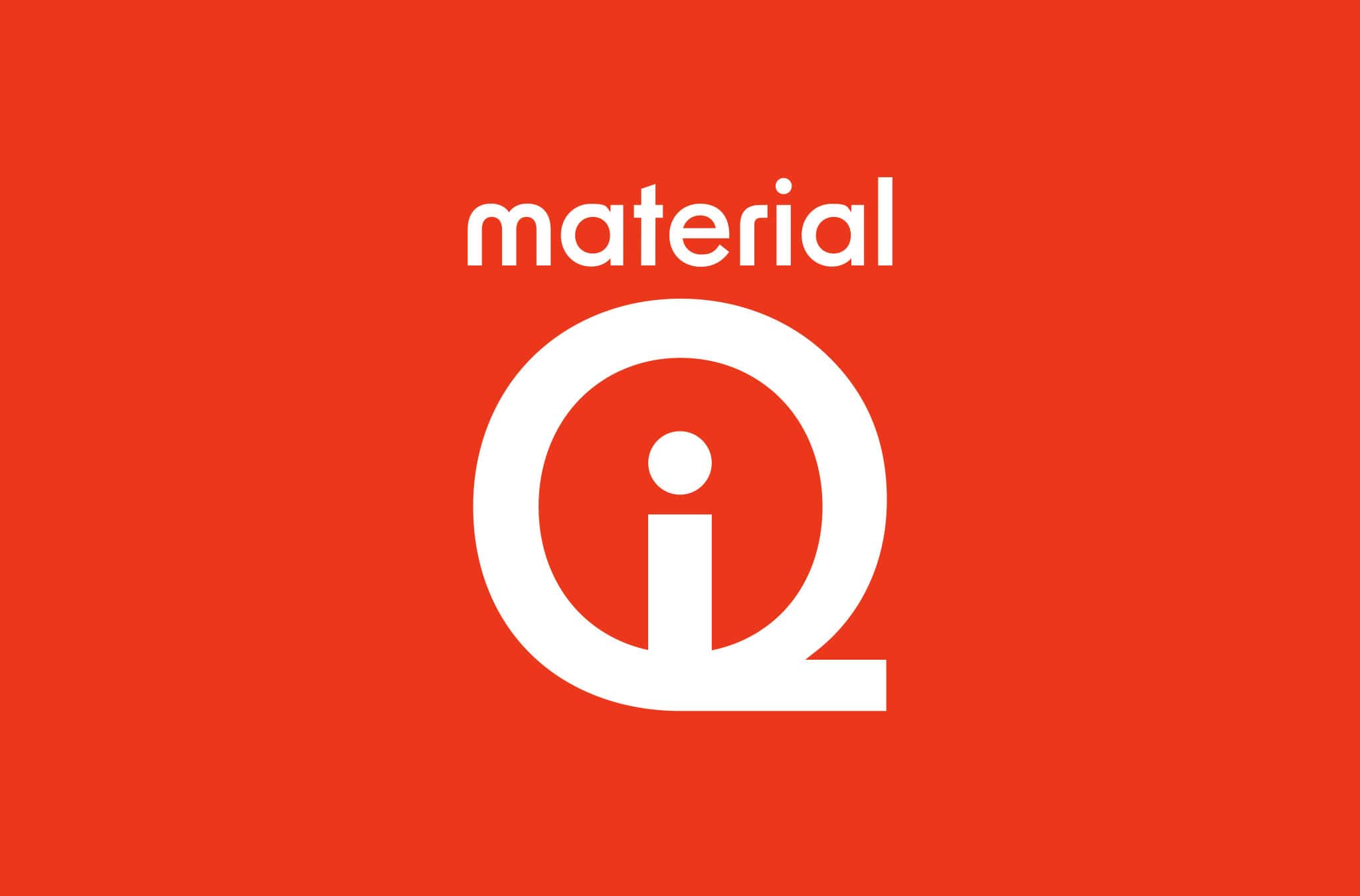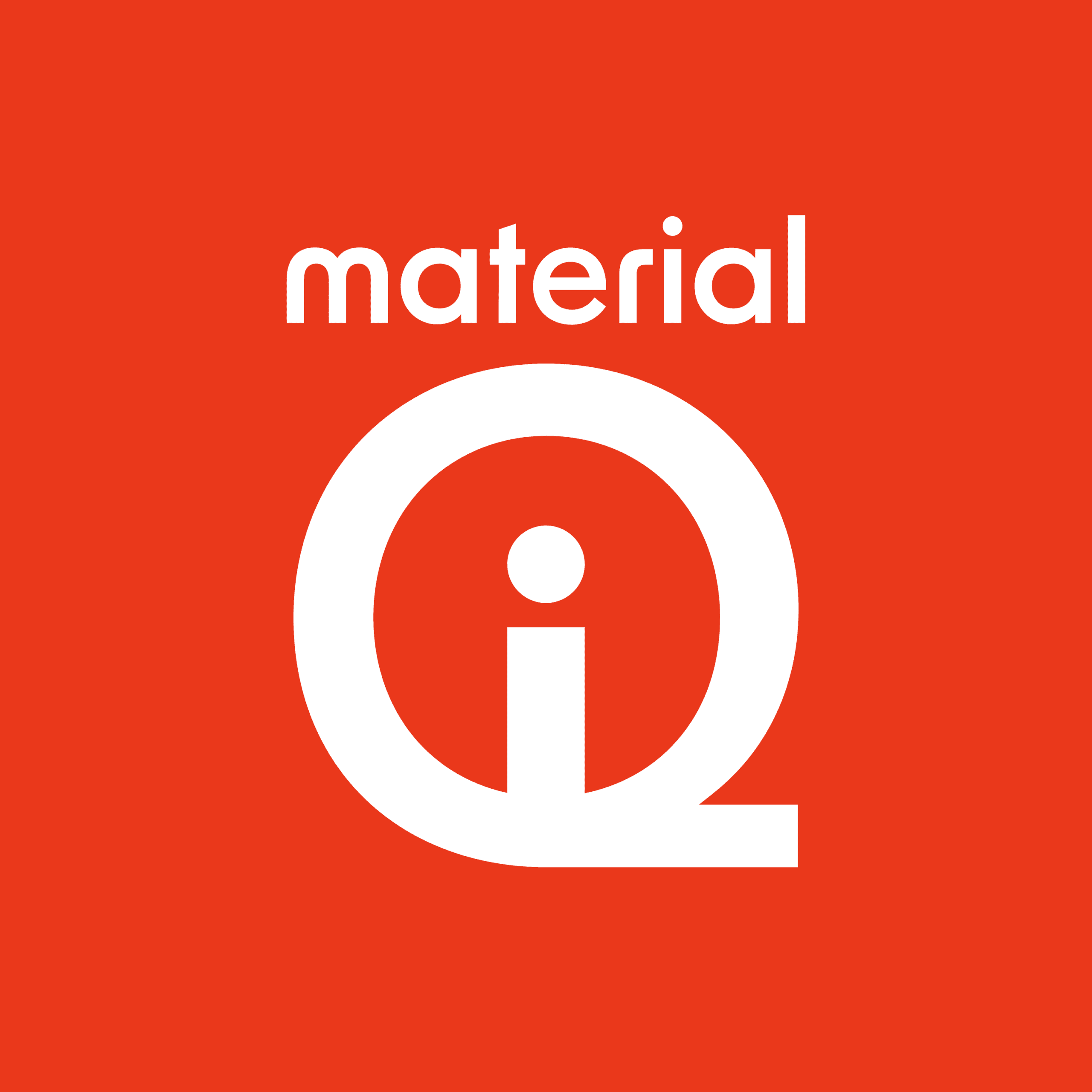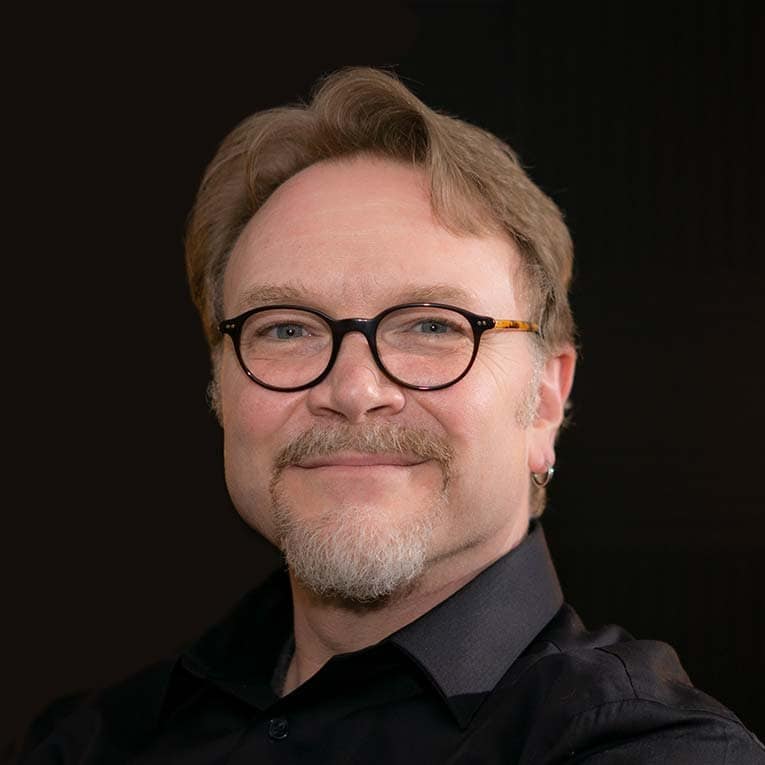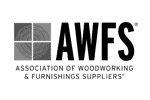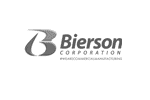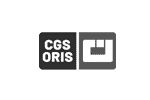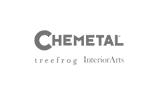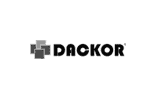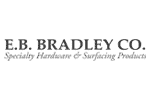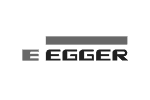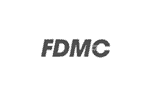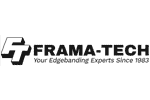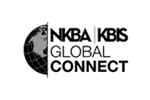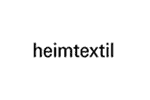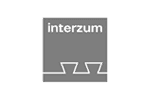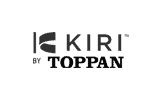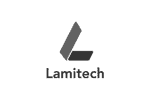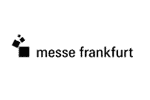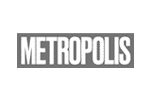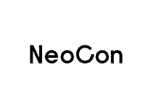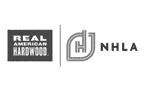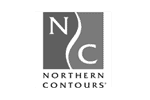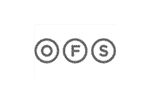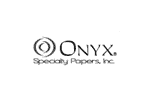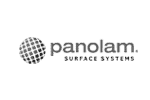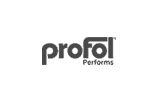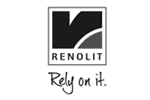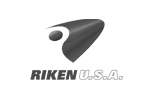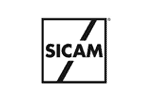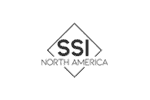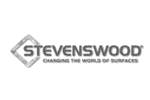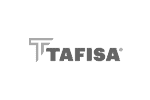Podcast: Download (Duration: 50:58 — 46.8MB) | Embed
Subscribe: Apple Podcasts | Spotify | Android | RSS | More
This episode of the Material IQ Podcast, host Kenn Busch dives into “The Squeeze” — that critical stage in every project when interior budgets get tight and material choices are under pressure. Joined by Jessica Calabrese of Parksite Atlantic Plywood and Greg O’Connell of SSI North America, the discussion explores how 2D and 3D laminates (2DL and 3DL) can help designers and specifiers balance aesthetics, performance, and cost when other materials fall short.
From project bidding challenges and specification “doom loops” to the importance of early collaboration between designers, millworkers, and suppliers, this conversation offers practical insights into avoiding costly material substitutions and achieving cohesive, high-performing interiors.
Every episode of the Material IQ podcast explores in detail the materiality of the built environment: innovation, inspiration, and case studies from leading architects, designers, suppliers, and manufacturers with an emphasis on climate-positive outcomes in commercial and residential design.
The following podcast transcript was generated with Whisper AI and may contain errors.
Jessica
00:09 – 00:26
I, you know, I call it the squeeze. You know, interiors is always the thing that gets cut at the very end when, you know, concrete has gone over budget and there’s no more room for change orders or, you know, I do. I call it the squeeze.
Kenn
00:27 – 00:49
The squeeze. I love this. point in every project where the gaze turns to the interior. We find out that the budgets aren’t what we would hope they’d be for all the finishing touches. Maybe we found out some of the vendors we chose aren’t capable of executing the vision of the design team. So it’s the squeeze. And it’s also.
Jessica
00:49 – 00:53
It is a number one frustration for interior designers.
Kenn
00:54 – 02:40
So let’s see if we can’t do something about that. I’m Ken Busch, your host for this episode of the Material IQ Podcast. And today we’re going to talk about a couple of materials, 2DL and 3DL, that sit right in the middle of the squeeze. The squeeze being material substitutions that happen because of budget design or performance reasons or sometimes the capabilities of your mill workers or cabinet chops. 2DL and 3DL, they can be squeezed in when other materials don’t meet budget requirements. requirements or they can be squeezed out if your suppliers don’t know how to work with these specialized materials. Let’s do a little bit of housekeeping on the terminology that you’re going to hear today. 2DL is two-dimensional laminates, 3DL is three-dimensional laminates. You can hear about PVC and a PVC alternative called PET and that’s polyethylene terephthalate. You can hear TFL, which means thermally fused laminate, known in the past as melamine boards or TFM panels. You can hear the term haptics, which is another way to describe our response to touch and texture. You can hear the term film, which really covers a broad category of decorative laminates and overlays. And you can hear FF and E, which means furniture fixtures in equipment. I’ve heard that term used in the hospitality specifications world, but it does apply to other project categories. And by the way, you can find out a lot more about all of these terms on materialintelligence.com in the material guides area. So it’s time to introduce our expert guests. First up, you’ve already heard from my old friend Jessica Calabrese. Sorry, am I pronouncing this wrong for decades?
Jessica
02:41 – 02:42
How did you say it?
Kenn
02:43 – 02:43
Calabrese.
Jessica
02:44 – 02:48
That’s the Italian pronunciation. So it’s technically correct.
Kenn
02:48 – 02:48
Okay.
Jessica
02:49 – 03:04
Jessica Calabrese, I’m with Parkside Atlantic Plywood and I manage the Commercial Specifications Division primarily focused on interiors for our
Kenn
03:04 – 03:13
Surfaces Business Unit. And just briefly, what are the challenges that you are hoping to address with a conversation like we’re having today? I think it’s
Jessica
03:13 – 03:29
great to open up the dialogue to just talk about how do we bring more awareness into specification efforts and material functionality and application use. I think that’s an important aspect of educating our A&D folks out there.
Kenn
03:30 – 03:36
Super. Now, Greg, your turn. Who the heck is Greg O’Connell? If I’m am I pronouncing that right, O’Connell?
Greg
03:37 – 04:24
Yeah, you nailed it. It’s actually George. Greg O’Connell, sales manager for SSI North America. We are a decorative services supplier to North America with different types of materials, 2D and 3D films. And then we also offer edge treatments through MKT North America. The education is key. The more that people know, the more confident they are. Because I don’t want to know that there are people in the market that don’t know what to do with our stuff. So it gets branded in a certain way or things get isolated because of the fear of being unknown.
Kenn
04:25 – 05:46
Well, and what I think is going on here is that, you know, you hear things in the field. I mean, you know so much about your mix of materials and your competitive materials. And then you see how people are actually using them. And that inspires you as well. I think that’s really what kicked off this whole idea. Greg had shared an example with me of a customer that had been doing an incredible job with the 2D materials and the conversation Greg had, the answers he was able to give the customer and the observations the customer shared with Greg were something that should not have been just a one-on-one conversation. They should have been something that we could broadcast to the entire industry. And then I talked to Jessica after that And she’s like, you know, my teams and a frig, you know, correct me if I’m wrong, Jessica, but you know, both your OEM sales teams and your spec teams are like, you know, we’re not really sure how to talk about some of this or how to recommend where it’s used. And then you brought up Jessica, the millwork, you know, the importance of connecting with the millwork houses. And that just brought me right back to Greg’s. And so there’s this beautiful sort of self feeding loop here where I think there’s a A conversation between you two guys that could be very, very helpful to the industry. So Greg, give us the 30,000 foot view of the materials that SSI offers.
Greg
05:47 – 06:43
We have really a few primary brains. We lead with our primary brand from Klockner, Pentaplast called PentaDecor. Penta decor comes in two primary fashions from SSI in North America. 3D laminates is the primary for the penta decor, really classically known in North America for the super mats. Another important brand from SSI is Recover, which is a, that is also a 3D laminate that is made from recycled water bottles. of PET on 90% post-consumer, which is a very high level of post-consumer recycle content. It’s pretty exciting. It’s not post-industrial, post-consumer, which has its challenges as well, but it’s definitely an interesting product.
Kenn
06:43 – 07:12
A quick note here about the PVC used in the materials that SSI distributes. They are plasticizer and Thalate free. These are rigid PVC films that don’t contain the plasticizers like you might find in shower curtains, shampoo bottles, and LVT resilient flooring. So Greg, how would you say your product mix is evolving at SSI? I would say over the last two to three years we’ve really
Greg
07:13 – 07:51
robustly increased our 2D program with PentaDecor. So this is now for profile wrapping and flat lamination typically found in like five-piece doors or those classic style shaker looks. We also represent a brand called Radiance and Radiance is a very high-end 2D PET film, pentadacore being PVC and both 2D and 3D. And then Radiance again is PET, comes in high-gloss and supermat, very high end robust surface protection and those things that would be expected out of a 2D film.
Kenn
07:53 – 08:46
And so just in the spirit of clarification, a 3D laminate is a flexible overlay, a laminate, that can be adhered to five of six sides of a panel, a contoured or shaped panel, all in one processing step, right? So let’s say it’s a cabinet door, you can surface the face, the tops and bottoms, and the edges, but not the back, all in one processing step. So that’s why we say 3DL, also known as RTF, vinyls, thermofoils, right, a million other terms. And then 2DL is really an application where it’s the material, the overlay, the laminate is wrapped around three of the five sides, the face and opposing, opposing edges. Am I, am I tracking? Am I explaining that properly, Greg?
Greg
08:47 – 09:32
Yeah, roughly. Yeah. When you, when you think about 2D, 2D can come in so many different fashions. So the, the proper description, unlike 3D, 3D is pretty straightforward. 2D, if you think of a molding, if you can think of a, of a five piece door or a molding, a crown molding, you can really effectively cover the visual side of the piece with a thinner, yet still engineered to perform in its resting place properly. So if that’s a crown molding, if that’s a five piece door, if that’s a decorative frame for a picture, you know, what have you, it 2D comes, it could be a flat panel.
Kenn
09:34 – 09:40
So from a surface finished perspective, a few years ago, everybody was wild about high gloss. Is that still the case?
Greg
09:41 – 09:46
You know, from a trend perspective now, it’s very little high gloss. It’s monochromatic at best.
Kenn
09:48 – 09:54
Interesting. And you mentioned super matte, which is, is that the same as the anti fingerprint stuff that is so popular?
Greg
09:55 – 10:36
Super matte can come in variations depending on the coating system and the, you know, the level that you buy, meaning from the menu, if you will. But yes, Superman typically comes with a variety of performance characteristics and anti fingerprint. As much oil as we leave behind just people, we still refuse to believe it and we don’t want to see it. And so that’s where these new top coding applications are really, they’re leading the way and allowing specification on mass scales to be okay because those specifications demand it.
Kenn
10:37 – 10:41
When you say leaving oils behind, we’re talking about fingerprints, right? We’re talking about skin oil and–
Greg
10:41 – 10:52
Yeah, I mean, anytime you touch something, you’re leaving a fingerprint, but we refuse to want to see that. So we demand that our surfaces really do not show that.
Kenn
10:52 – 11:02
And then 3D laminates really, you mentioned solid colors, but they’re in wood grains. They’re in metallics. Do you want to give us an idea of the kind of the design scope of a 3D laminate?
Greg
11:03 – 11:42
So from a texture standpoint, we can provide a textured emboss that would feel like an oak tree or modern wood pour where it’s, you know, striated drops with a very velvety soft texture from a haptic standpoint or from a shopping standpoint. I think at least in North America, we shop with our hands. We very much reach out and touch before we make a comment on how we think something looks. We can’t wait to touch that Superman and really feel the haptic part of it and decide if we really like the color or not. It’s very interesting.
Kenn
11:43 – 12:08
Let’s talk just a little bit about what 3D laminate replaces, I guess, in the real world, right? Because you can get wood looks, you can get the solid colors, you can get the different finishes from high gloss to super matte. What is the advantage of using 3D laminate over some of the, let’s say, legacy choices or traditional choices for those finishes? And what are those other materials and finishes that you’re you’re replacing with 3DL?
Greg
12:10 – 14:35
- Yeah, well, 3DL provides, as you described earlier, five of the six sides. So if we think about from a store fixture perspective, if we have high wear, high impact, below the waste applications that typically would, you know, really take a beating, traditionally we’ve designed with things that have been very rigid and very supported and have tendencies to fracture and chip over time. 3D laminates, because of its composition and its structure underneath it, MDF, typically don’t fracture. The sharp instruments are bad news for 3D laminates, but in an impact situation or a wear situation, transactionally on a counter or below the waist, people rubbing up against it constantly, They really outperform a lot of the materials that are typically specified or at least in the price category. So again, sharp instruments and high heat are no good for 3D. That’s our fail points. Those are not good. Where other decorative surfaces definitely will perform 3D. But when we’re talking about impact and wear resistance on longevity, even in comparison to something like paint, it can be achieved at a much less cost to paint a door over time. But if you have to replace or the idea is to add on and maintain 3D laminates, definitely give a leg up to that type of decorative surface when we’re competing. So it’s a wide category of competition. I in a lot of ways, my partners are also my competition. So our responsibility is to make sure that we partner with Penta to Core Films or any brand of films that we offer in edge banding to people in the industry like the TFL suppliers. So it’s really important for us to have those cooperations, but in the same breath, we’re both fighting for the same. In some cases, we’re both challenged for the same project to our work competing against each other. So it’s the right material in the right application for the right expectations, I think.
Kenn
14:36 – 18:06
So, and because, okay, you mentioned sharp instruments, right? 3DL is a thermal plastic, and so if you drop a scissors point down onto it, it’s going to make a nick, right? Just like if it was veneer or paint, right? So I know you’re comparing yourself to all these These other laminate materials, these super durable materials, but 3DL really replaces paint and solid wood because you can carve these contoured edges, you can carve interior details in a door front, you can engineer in a cutout in the middle of a 3DL panel, like when you’re at the doctor’s office and they have the little hole where you toss the the gloves into the waste basket, right? Through the top of the thing. So, you know, 3DL is really replacing other more traditional finishes that have all this design flexibility, odd-shaped pieces, contoured edges, soft edges, etc., etc. So, you know, I’ve been heard you, I’ve heard you make this comparison before. I’m like, you’re comparing yourself to the bullet-proof stuff in our industry, which is what design ways, which you’re really competing with are these really fragile, more natural and more traditional services that don’t stand up to cleaning like in a healthcare situation, right? So it’s kind of like the context of what you’re talking about needs to be really firmly established. And so 3DL is the most flexible, laminate material we have. And the cost of that is, well, you can’t stab it, right? And you can’t put a boiling pot of water on it. Sounds like the same thing with a painted surface or a veneer surface, you know, those are going to fail under the same situations. A quick word here about the miracle material that is MDF. MDF is made from the fiber of the parts of trees or the pieces of wood that are left over from other woodworking processes. What used to be waste, it’s refined down to particles and then further refined down to fibers and turned into panels that have this very smooth, very homogenous surface even as you machine into the wood. So any kind of material like a 3D laminate or a 2D laminate that is thin enough to show through any imperfections that you might have in the substrate, MDF is an excellent choice. And it’s also a course because it is using waste wood, wood that we used to landfill or burn. It makes it a very sustainable component once you put the durable long lasting 2DL or 3DL material on it. And then application categories for 3DL, right? We’re talking commercial and residential all over the board. I talk about healthcare a lot because this is a lot of feature stories I’m working on right now or in the healthcare world. And 3DL because it does that, you know, laminate five of six sides of a panel in one processing step. I cannot get that phrase out of my mouth because I think it’s really important. There’s efficiencies there. But it’s also seals that panel for easy cleaning. And because it is a thermoplastic surface, you can clean it with really simple compounds, right? I think I’ve done this on some CEUs in the healthcare world. It’s open water.
Greg
18:07 – 18:21
Because it’s hydrophobic, because it stands up to a lot of common and maybe not so common surface cleaning agents or even practices.
Kenn
18:22 – 18:57
A quick side note here on the testing that needs to be done on surface materials that are going to be used in healthcare applications. They need to be able to withstand not just the cleaning agents used in those settings, but also any other chemicals that might splash around, body fluids, disinfectants, other types of things used in a medical setting. So while cleaning these materials is relatively easy with soap and water, they need to stand up to a lot harsher chemistry than just soap and water. But I digress. Greg, please continue.
Greg
18:58 – 19:51
When you talk about reagents, it’s not Lysol anymore. It’s not just Lysol. It’s 50 versions of the same thing. And it’s going to make an impact on what you test and what you have available. And really, it’s driven by our customers. The things that are obvious, okay, iodine and betadine and those things, yeah, that’s pretty clear. But you know, when things change and technology changes, not just in our industry, but in cleaning and everything else, this UVC lighting has made us reconsider coatings and how long it can be contacted for. It’s an interesting challenge. 3D still performs in that world, I would say as good, if not better than most. It’s an aggressive environment. It’s very hard.
Kenn
19:51 – 21:04
Well, in that same sort of desire for a low maintenance, easy to clean surface is not just limited to healthcare too, right? I mean, I’m doing stories on education environments and how important it is to keep our preschools as sanitary as possible, even though, you know, the entire population are little germ buckets running around. And then also multifamily. Developers are, they don’t have access to the cleaning crews. They can’t afford them or they’re just not available as apartments turn over or as the community rooms or the shared kitchens and the other amenity spaces in multifamily need to be cleaned by the tenants. Well, you got to keep it simple. It’s important to note that in commercial specification especially, very few of these materials work in a vacuum. They are part of a package of other materials. They need to coordinate functionally. They need to coordinate design-wise with other types of materials. So what can distributors and material suppliers do to make sure those projects turn out successfully?
Jessica
21:06 – 22:47
As far as the specification side of it, I really think it just comes down to really educating and thinking about how to include 3DL into the laminate conversation. So a designer can essentially pick whatever aesthetic they want to, and then they can pick the laminate product that best fits the application. One question we get faced with all the time is, what is the radius tolerance? Well, it depends. So if you’re looking at TFL, if you’re looking at HPL, you know, there’s obviously some limitations there. Enter 3DO, you know, as a solution. So that’s why we really tried to work with designers and educate them to include us on their whole design process and the applications because we see it all the time where a specifier will put into a written specification that states, okay, we want melamine, but we want it has to meet NEMA standards, which obviously don’t exist for melamine. And so we see a, we really see a confusion in the industry between the differences of TFL, HPL, and 3DL, right? And they’re not always used properly. So that’s where we really need to kind of group them together and target the market as a whole, that there’s always a solution. I mean, we can really achieve just about any interior application between the three product lines, and they can work together.
Kenn
22:49 – 24:41
- And this is something, and you mentioned design matching earlier, Greg, design matching programs of these other materials. In a perfect world, our industry would supply design and then be the consultants and the experts to advise what material carrying this design should be used in each part of your project, if that makes sense. So if we have good design matches between HPL, TFL, and 3DL, and of course now 2DL as well, how do we educate the specifier about the whole package rather than just the vertical of this or that or that or that material. In other words, like you’re saying, you know, offering, uh, Jessica, offering the, um, ability to design first and then worry about the application later because we have the material to suit, you know, high use healthcare or, you know, one thing I didn’t mention was the use of 3DL in retail. I mean, I would forever and ever like the best buy cash counters were 3DL targets, cash counters or 3DL material. I can’t think of a much more abusive situation than that. But they don’t need that kind of wear resistance for maybe some of the vertical surfaces. Maybe in some areas, Greg, to your point, where there’s people are throwing scissors and scalpels around. Maybe you want HPL or TFL on those surfaces. I know there’s cooperation between different suppliers and I can’t think of any companies, actually as a manufacturer that offer 3D LTFL and HPL. So is our industry, Jessica, doing a good enough job as the individual vendors who have matching programs? Are they team players when it comes to helping you make the case for choosing design first and let us help you figure out the exact material for the application?
Jessica
24:43 – 25:58
- I can tell you, Ken, it’s definitely come a long way. (laughing) We’ve seen a lot more cohesiveness. But I will tell you that there are still challenges, just finding the exact right match when you start mixing these materials, where maybe one has a really long lead time. Maybe you need an edge banding that matches a particular 3D L or HPL color and it has a really long lead time. Well, now the whole project and everything is in jeopardy because you’re out trying to source and find the appropriate match. Again, we have a lot more cohesiveness. The colors definitely are coming together a lot better than they ever have. I know that I’ve seen some really great applications where a TFL and 3DL were working together on a panel or 2DL. And visually, the designs work great together. And it also provides a good application at a cost effective solution for a customer. What it takes to get that downstream, we can definitely have some room for improvement there.
Kenn
25:58 – 26:46
Well, and this is what you, I think, what started this conversation was you looking for some of this kind of guidance for your teams out in the field and how to better make the case for working with multiples of these materials rather than just, okay, we made our decision, going to be XYZ material, we can move on. And then I think another thing you said really sparked something, Jessica, a conversation I had with some commercial interior designers was getting the interior design team involved at the outset of a project, rather than bringing them in, you know, okay, we’ve, you know, we’ve decided on everything else. And we’ve got this much of a budget left. Here you go, interior design team. good luck. Do you find that kind of with your market?
Jessica
26:47 – 28:24
I call it the squeeze. Interiors is always the thing that gets cut at the very end when concrete has gone over budget and there’s no more room for change orders. I do. I call at the squeeze. And it is a number one frustration for interior designers. I can attest to that in various conversations. There’s also the value engineering side of it, right? So how do I get the highest end aesthetic within this price budget? So, you know, I mean, it really is a challenge and it needs to be the design teams need to be included in the onset whole design process because you know when you get into things like healthcare for instance there’s a functionality component to all of this. There’s an efficiency component to all of this. How can we create a design that is not only cleanable that’s aesthetically pleasing that has a long a long ROI on it can stand type abuse but also cuts down on the overall operating cost of the hospital itself, things like less hours and maintenance and cleaning. So all of those things are challenges that designers are faced with now. And so if they know more about all of these different material options and how they can work together, it’ll solve a lot of problems.
Kenn
28:25 – 28:27
When is the crucial moment for this to take place?
Jessica
28:28 – 29:22
This happens during the bidding process. So generally, when a project goes out to bid, let’s say that a GC gets awarded, he’s sending his sub-bid packages out. The Millwork fabricator firms, they’re quoting in a price group one or a price group two within a certain product line. And so then the designer will go back and say, “Well, I want this product. I want this color.” And they’re saying, “Well, we didn’t quote it that way. So we were awarded this bid.” And so you’ve got to choose between this color group that meets this price point because that’s how we bid it. And by the way, there’s no more funds for change order approvals. So they’ve got to go back to the drawing board. So a lot of it really happens during the bidding process where what I call the squeeze is really just a timing thing between the finished selection and when the bid actually happens.
Kenn
29:24 – 29:48
So this sounds like a fairly detailed conversation to be getting into when you’re weighing the relative benefits of different materials and how effective they’ll be for the specified application versus the costs. It sounds like it can be a pretty in-depth conversation. Is this something that you find yourself engaging in often?
Jessica
29:49 – 31:28
Absolutely. We do. In fact, it is the biggest value that an architectural and design rep has to a specifier. To be the lookout their eyes and ears and helping them ensure that their material selection doesn’t get changed downstream for various reasons. So a really good specifier will reach out to their rep and say, listen, this is what I’m being told. And then we’ll work on behalf of that specifier downstream. might do things like, well listen, there might be a price concession, it might be an inventory thing, it might be something as easy as a change out from a substrate. That’s an important piece of this, right? The substrate piece of this. So it could be, okay, the architect designer calls and says, you know, we’re being told that this material is not available or it’s discontinued. Well, it’s because it was specified on particle board and you can’t put that material on particle board. Or you know it really has to be discussed in an entire solution and an entire package with the substrate to ensure that the material is available and that it’s even a viable combination. It really just comes down to sometimes there are millwork or firms that are chosen, of fabricators that are chosen early in the bid package phase, and then a designer selects something like a 3D L and that millwork doesn’t have membrane pressing capabilities, right?
Kenn
31:29 – 31:31
So the number one thing that we try to do is change it.
Jessica
31:32 – 31:44
Another valuable thing that we do is make sure that we bring partners to the table that support the product line that can actually offer the services that are needed to win that bid package.
Kenn
31:45 – 32:23
- So, and you brought up a really important point there a second ago, Jessica, that it’s not really clear sometimes to the specifier how this material ends up in their project. And you mentioned somebody picking out a millworkhouse that may not have 3D laminating capabilities. In our world, there are lots of companies that specialize in 3D L components. And so you do the make versus buy sort of thing, but that’s not always in the margin plan for certain mill work houses, I think. How do we prevent these kinds of dead end specification nightmares?
Jessica
32:25 – 33:42
We need to start by being advocates for our designers, you know, downstream. And that really just comes down to being part of the project team. So saying, okay, if this is what you’re considering, we’ll have to make some adaptations or the capabilities for this product doesn’t work with this. Or here are some certified and renowned millwork fabricator companies that we know can achieve this. So that we’ll help you bring this bid package to your GC and loop in that millwork company. And as far as whose responsibility is it, it really is everyone’s responsibility. So it’s the general contractor’s responsibility to ensure that when they get a bid package that it’s going to be met. It’s their responsibility to make sure that their subcontractor, that mill worker fabricator, is following along the guidelines of what has been quoted and what the scope of work that has been indicated. And then it’s our job as the liaisons to make sure that all of that happens.
Kenn
33:44 – 33:58
- Greg, do you have any insights from the real world on how to prevent sort of these specification, doom loops where I like this, but I can’t get it. It got knocked out of my spec and I have no idea how to change this next time around.
Greg
33:58 – 35:18
The amount of designers that I come in contact with over a year’s time is staggering, and I know how hard they work, and I know what they’re up against. We get calls all the time because our material name gets put on there, “Pinted Accor,” and, you know, “I need to buy five sheets of vertical grade, you know, for a project, and I use my regular red adhesive that I use on Wilson Art.” you know, that’s not the material. Sorry. And we go through an explanation for those that don’t know, you know, membrane pressing uses a water-based adhesive, which is why it contributes to indoor air quality on LV4. It’s a different process. And, you know, the people that have taken the time to understand what they’re specifying, sadly, we run right up against the people that Jessica just described they’ll just move on and say I can’t get it. And then they’ll move on to something that they’re more accustomed to working with that fits into their production facility. I hear Jessica loud and clear. I hear the scenario. I know the scenario. I live the scenario. And, you know, we were the ones that get that back end call that say, well, I want to buy it, but, you know, they’re not looking to buy it and actually use it the way that’s meant to be used. So it’s a challenge.
Kenn
35:19 – 36:51
Yeah, because 3DL is creating 3DL components is a little bit of a specialty. You need specific adhesive knowledge. You need to know what you’re doing with your substrates, the MDF. And of course, then there’s the membrane presses that are their own animal as well in this industry. Another quick side note here, membrane presses have come up a couple times in this conversation. That’s the machinery used to apply the 3D laminate to the carved MDF pieces. Either there’s a membrane, like a bladder in the press, that pushes the laminate down into the contoured pieces of the MDF, or a vacuum is created below the parts and the thermoplastic material, which has been slightly heated to be pliable, is pulled down over the carved pieces and basically sucked into every nook and cranny that has been carved in that MDF. It’s important to note also here that these 3D laminate materials are formed to the piece. They’re not just glued down, but they actually take on the shape of the piece, which reduces any possibility of them delaminating if they’re pressed right and used with the right kind of adhesive. of. So that’s everything you needed to know about membrane pressing of 3d laminates, but we’re afraid afraid to ask. So it’s now time to move on to our discussion about 2d laminates.
Jessica
36:52 – 37:11
I think that when we’re talking about 2dl and how does that fit into the big picture, Right, so you’ve got TFL, HPL, 3DL. So what’s the end with 2DL that makes it favorable in comparison?
Kenn
37:12 – 38:30
2D laminates are decorative surfaces that can cover the face and then opposing sides of a piece. Whereas 3DL, of course, is five sides– the face, the top edges, the side edges. So 2DLs are used for things like moldings, crown moldings, cove moldings, picture frame components that are then assembled into further products, let’s say like a five-piece cabinet door. They can be polymer based and they can be paper based. They’re generally a little less cost than 3D laminates for the material itself and they’re designed to be applied usually by profile wrapping machines which run at a pretty high speed but are really only able to be set up to make one part at a time. So this is for high volume, like we said, architectural moldings and door and frame components. They can also be used to laminate entire flat panel faces for reasons we’ll discuss in a bit. And once again, they are part of the overall package that an architectural interior design specifier has access to to complete their project with the right budget performance and design parameters in mind. It’s important to know that two 2DL is not a lower performing material versus 3DL, right, Greg?
Greg
38:31 – 38:50
From a 2D perspective, we can provide the same, if not better, performance in a 2D film than I can in a 3D film. And 2D allows us to kind of hang in that pocket and really live and breathe very well in the 5-piece door world, especially.
Kenn
38:51 – 39:10
2DL is growing, I think. I’ve recently published a story in, I believe it was, Closets and Organized Storage Magazine. And Greg, you and I started these conversations earlier this summer. 2DL is really kind of on the upswing right now. Is that still true? Did I perceive that correctly?
Greg
39:10 – 40:46
Yeah, the perception is exactly right. We just recently updated our 2DL page on our website to add even more solid imprinted items. The beauty of our 2DL program, and this is something that it really needs to be said because we starved for these exact matches and versatility in the design world. So why do we pick 2D? Well, it’s probably because of cost at some point or really design specific, but the beauty of it is we actually have matching wood greens in 2D and in 3D. And then we have solid colors and matching 2D and in 3D that allow people to have that design confidence. And we have partners in the industry, TFL partners in the industry that are cheering us on for those matches as well and supporting it. So that’s a 2D competitor in a matter of speaking, but also a tremendous partner to us. And, you know, this is a category for SSI that really didn’t exist before. really in two, two and a half, three years, we have literally built over 70, it’s 70 stocked 2D items. And, you know, the Radiance Program continues to be a tremendous success from a PET standpoint. When we, when we have those needs that it can’t be PVC, we definitely have opportunities in polypropylene, as well as PETs. Everything that we hear in North America right now, 3D is important and 2D is vital. You absolutely have to have it.
Kenn
40:46 – 40:58
What specifically, applications-wise, is 2DL being found on where it wasn’t before? Or is it just an increase in certain types of components and design features that 2DLs? What’s the
Greg
40:58 – 42:32
growth all about? Well, it’s a good question. We launch a trend book about every 18 to 24 months. That really talks about the four megatrends. And from emotion and design. And these things really are overarching trends. And then as we experience what we would call micro trends or things that happen within the mega trend, that kind of shows maturation. If you think about five piece doors, that has been around for over 40 years, that door was made in high pressure laminate in Detroit by a company called LaMica. In that door was the talk of the town over 40 years ago. So in other words, this isn’t new. We’re designing with five piece doors. We’re designing with profile wrap pieces. We’re finding ways to incorporate flat panel lamination in combinations of shape, as well as elegance and, you know, just simple concepts of solid colors. So from a, from a cost perspective, like if you’re looking at How much film is used and wasted versus, you know, one over the other 2D dominates in that perspective because, you know, if you’re running a lot in those moldings, then you’re, you know, you’re very efficient and effective with how much material you’re using. 3D, you have to have some space on the table and there’s a little bit of, you know, spillage to get the part to press properly.
Kenn
42:32 – 42:36
Right. There’s some leftover material scraps after you cut the pieces out.
Greg
42:36 – 42:37
- Yeah, exactly.
Kenn
42:39 – 42:42
- One thing I was surprised to learn about 2D laminates
Greg
42:42 – 43:01
is that– – Well, there’s a lot of flat panel lamination too. There’s a lot of four by eights that get flat laminated with 2DL material. Yeah, for, you know, whether it’s a wall panel application, we have tremendous business and our radiance and our PET walls, wall program as well as our PVC wall program as well.
Kenn
43:01 – 43:14
So why would somebody choose to flat laminate a 2DL, right? which could normally be sort of the realm of a TFL or an HPL panel. Why use the question? Yeah. Well,
Greg
43:14 – 44:00
it’s design consistency is probably the first and foremost. And then I would say performance. We are going to get a lot of stain protection that we didn’t get or impact resistance. You know, I go back to casinos all the time. Um, what panel applications and casinos is a real thing. Um, they have a ton of flat walls everywhere and they get beat up really bad and 2D starting to get into those retail environments where they’re specifying specifically, I want this material with this coating because they understand as DeJustice point earlier, education is key. So we can explain to people what you get and let them ask the question of their other materials.
Kenn
44:01 – 44:18
When you mentioned, I think the first thing you said when I asked why use it, you said design matching or color matching, right? So meaning that is exactly the same material flat laminated to the center of this panel that’s being wrapped around the moldings that frame the panel in the case of, you know.
Greg
44:19 – 44:55
In the world, in the world of materials, and I am a partner to a lot of different people. SSI is a partner and I have commitments that we are going to match. And I’m here to tell you right now that anybody that has ever gone through the process of matching, there are very few crossover materials that match one to one. There’s very few. Even when they’re called or industry accepted as a one to one. So to get an exact match, it is always best to design with the same material across every aspect. You’re never going to get a better match that way ever. But most people don’t design that way.
Kenn
44:55 – 45:21
Well, and I think, I mean, part of the matching challenges, I think, is not just the material and the color and the way they’re printed. It’s also the textures that are applied and the way these different material surfaces catch light a different way, right? So it’s not really the material. It’s just there’s a wall, I think you hit when you’re talking about how light interacts with the surfaces of these, you know, these different engineered materials. It’s just they’re different animals.
Greg
45:22 – 45:52
It’s funny to say like, because that’s part of what we call launch sheets for our materials. So for every item that we stack, which is a lot, you get some sexy language to help inspire the sales mind, as well as information that seems simple, but the full repeat of the design is also something that is really important for people. also found when we’re talking about wood grains also found on our launch sheet.
Kenn
45:52 – 45:56
Where would people go to look at this launch sheet, Greg? Oh, Ken.
Greg
45:59 – 46:00
www.ssinorthamerica.com.
Kenn
46:02 – 46:17
Jessica, you know, we just sort of dove real deep into 2DL. Did this spark any ideas or any sort of needs that you have on communicating exactly what 2DL is and where to use it?
Jessica
46:18 – 46:52
- Absolutely, I think, you know, the first thing that popped into my mind is the balance of aesthetic and affordability. And I can see that in an FF, in FFB and the applications all day long. What a great solution for a lot of FFB product. So even RTA, Cabinetry, which is becoming a little bit less competitive from what I hear in the coming months.
Kenn
46:53 – 46:53
Right.
Jessica
46:53 – 47:17
So there’s really a great channel and opportunity for the 2DL. balance of functionality, price, and aesthetic, I think is really a home run to designers who are looking for all three of those factors there.
Kenn
47:19 – 47:45
So this whole conversation today has been about trying to demystify 3D laminates and 2D laminates and help the spec teams who are calling on architects and designers do a more effective job of educating them on their material options at the outset of the project. Is there anything we left on the field? I mean, what’s the big takeaway here?
Jessica
47:46 – 48:24
Doing exactly what we’re doing today is absolutely a great start. Just having a conversation, bringing awareness, putting the product out there front facing into the marketplace. making a concerted effort to go after those areas where we see opportunity to provide a 2DL or 3DL product and application as a solution and really just listening to the designer’s struggles. Really just asking the right questions and being able to offer solutions is really key.
Kenn
48:25 – 48:45
And I think also being able to express the challenges that we’re addressing, express those challenges in the same terms that the design community is expressing them. But are designers and architects comfortable with suppliers and distributors being so proactive, reaching out with advice at the outset of their design process?
Jessica
48:46 – 49:55
You know, oftentimes they are, right? Because what they don’t want to have to do is go back to the drawing board and spend more billable hours. You know, That’s why specification is so repeatable. Because once you have a product that performs and you’ve used it and you know that it achieves what you want it to achieve, it’s repeatable. From that point on, it becomes trusted. So the education piece of that starts first and foremost. And then it moves into repeatable process, which is obviously where you gain more awareness and more cases, case studies and examples and comfort and trust and all of those things, right? So designers don’t know what they don’t know. If there’s a product out there that solves a problem for them, they are absolutely willing to sit and listen to how you can help them solve a problem. Because at the end of the day, our job is to make their job easier. So if we can bring something to the table, they are absolutely willing to listen.
Kenn
50:09 – 50:22
This has been a production of Material Intelligence LLC made possible by SSI North America, SSI North America dot com. Thanks for listening. We hope we’ve improved your material IQ by a point or two.
Jessica
50:23 – 50:33
I call it the squeeze. At the end of the day, our job is to make their job easier. We can’t be strangers for too much longer, Ken.
Kenn
50:34 – 50:35
It’s been a while.
Jessica
50:35 – 50:38
We’ve got the juices flowing here. We’ve got to keep it going.
Kenn
50:40 – 50:48
You can find out more about all of the material and sustainability topics covered in this podcast at materialintelligence.com and climatepositivenow.org.
Kenn
50:48 – 50:54
Please visit both sites, subscribe, and click like on this podcast. See you next time.
